07. Camera Lenses and Focal Length
Lenses play an important part in photography — some may even argue that they’re equally, if not more important, than the choice of camera.
As we touched on in chapter one of this course, different lenses produce different results depending on the configurations within the lens barrel. These configurations determine the magnification and angle of view and allow us to create different effects, depending on the lens.
How camera lenses work
Lenses focus the light onto the recording medium, which allows an image to be recorded. As you’ll see from the illustration of a DSLR camera below, light enters the lens and passes through the front element (2) before reaching several lens elements (3, 5 & 6). These elements serve to direct the light to a single focal point so that it can accurately be recorded by the sensor (9) once the mirror (7) flips up (which is triggered by pressing the shutter button). Mirrorless cameras work the same way, but do not have the mirror or prism.
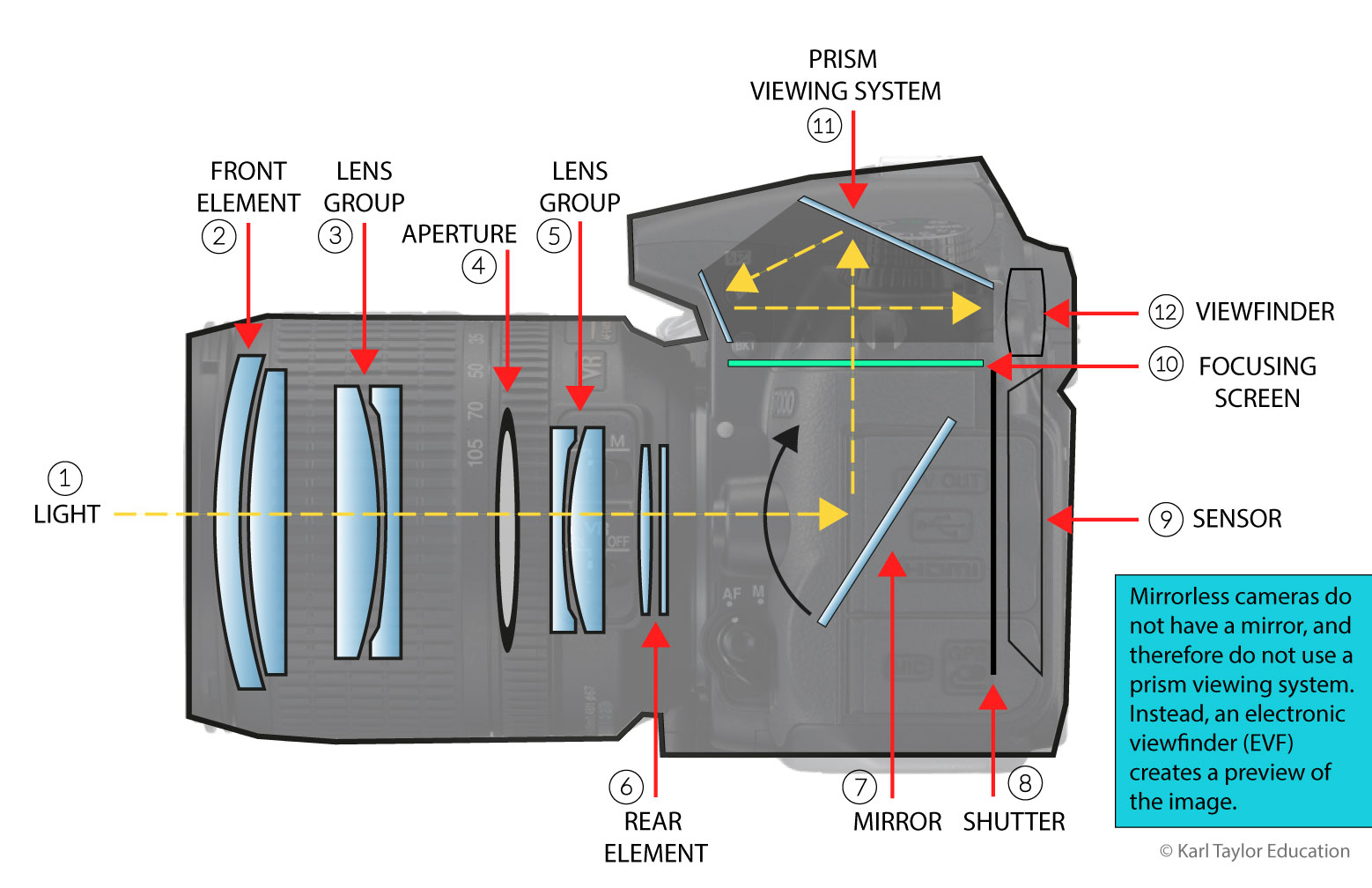
Lens quality is determined by factors such as its maximum light gathering ability (f-stop number written on the lens), its resolving power (how sharp the images produced are), the colors it can focus (quality of the glass), the contrast it achieves (also the quality of the glass) and the type of material the lens is made from - all part of lens design.
What the numbers on a lens mean
Now that you understand the basics of how a lens works, you might be wondering what all the numbers (and letters) on a lens mean. Typically, lenses are written in a format like this: Canon EF 24-70mm f/2.8L II USM Lens or Nikon AF-S 50mm f/1.8G. Each of these numbers and letters tell you essential information such as focal length, maximum aperture, lens version and focusing motor. Other features specified can include stabilisation, filter diameter and focusing distances.
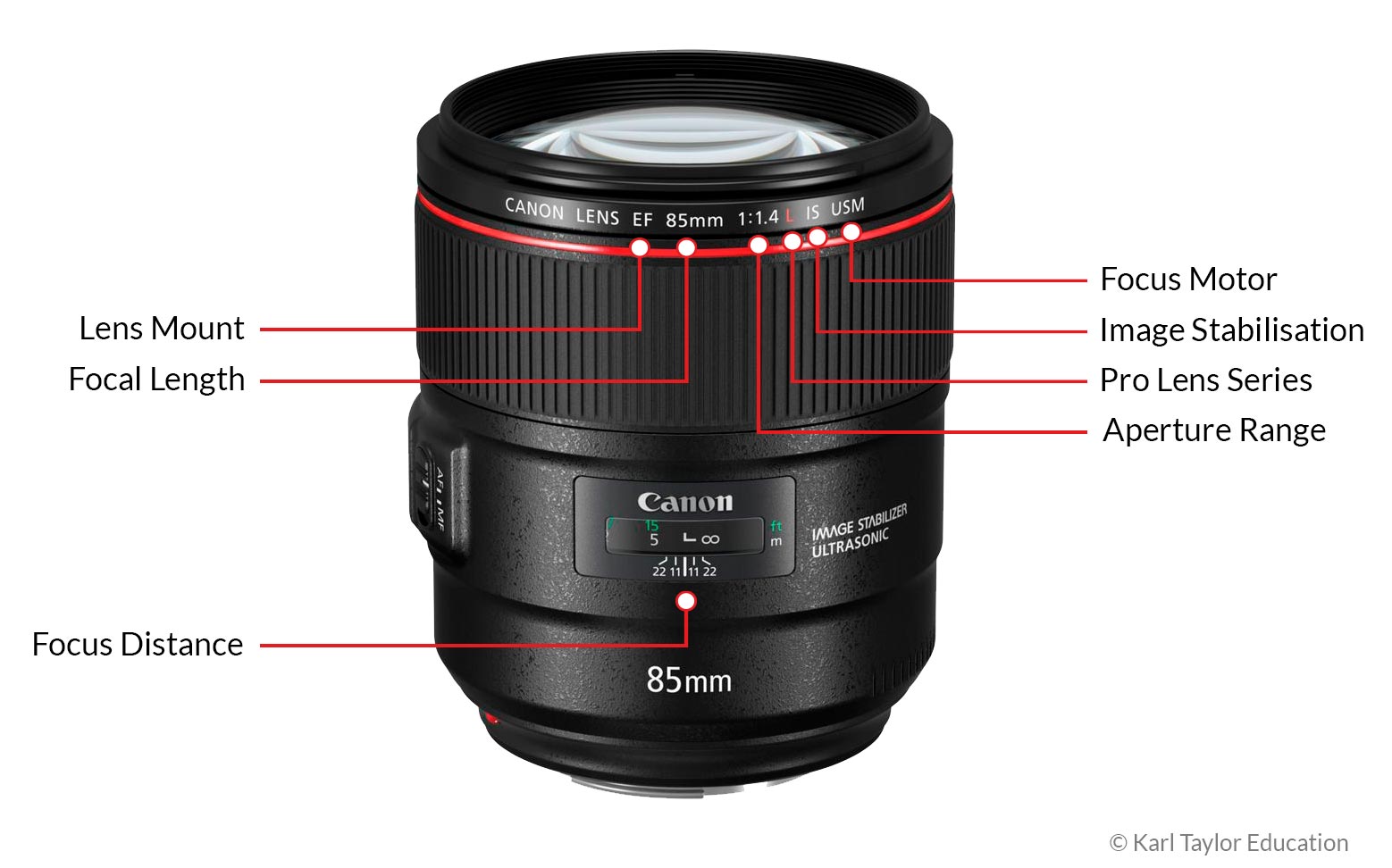
When looking to buy a lens, it’s important to consider each of these points as these will, in part, tell you about the characteristics and capabilities of the lens.
Types of camera lenses
When it comes to lenses, there’s no shortage of options. Quite simply though, lenses can be categorised into two main groups — prime or zoom lenses, both of which come in different focal lengths.
Prime vs zoom lenses
Prime (or fixed) lenses feature a fixed focal length. Available in a range of focal lengths, prime lenses are known for delivering high quality images. They also generally offer much wider apertures compared to zoom lenses.
Zoom lenses, on the other hand, provide a variety of focal lengths in one lens. This makes them very versatile and also reduces the need for multiple lenses.
Focal length
The focal length is one of the defining characteristics of a lens as this determines the angle of view as well as magnification. How focal length is determined requires an understanding of the physics of light and concave or convex lenses, but very simply, when light enters a lens, glass elements within the lens serve to converge the light to a single point, known as ‘focus’. The distance between this point and the centre of the lens is the focal length.
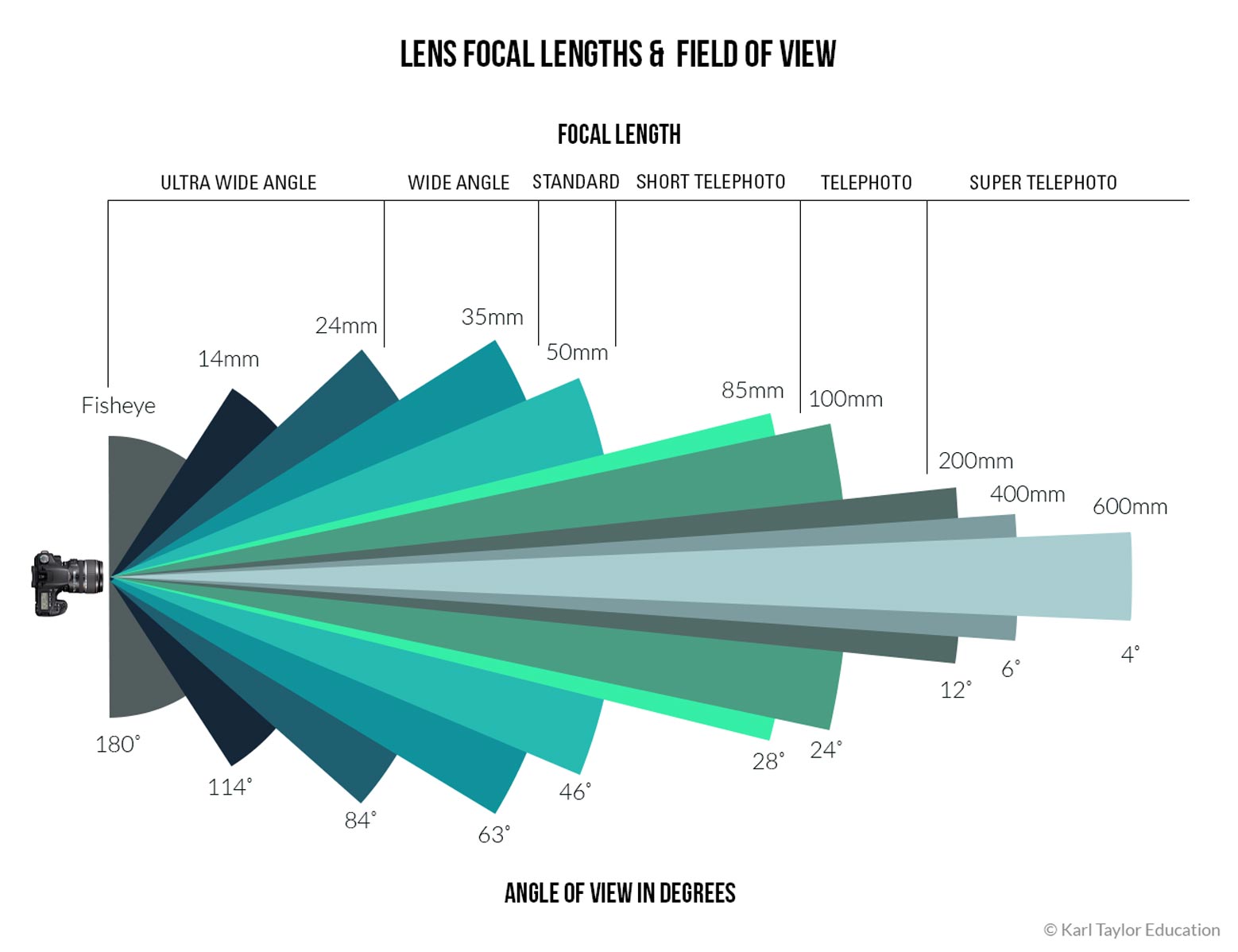
The focal length is usually indicated both on the side of the lens barrel and sometimes on the front of the lens, along with the lens diameter. Ranging anywhere from 8mm to 2000mm, there is a wide variety of focal lengths for photographers to choose from, each of which are better suited to different genres of photography. Lenses with shorter focal lengths provide a much wider angle of view and are therefore better suited to landscapes than product photography as well as less magnification. The opposite is also true for longer focal lengths, which may be better suited to sport or wildlife photography than architectural photography. Lenses with shorter focal lengths also provide less magnification than those with larger focal lengths.
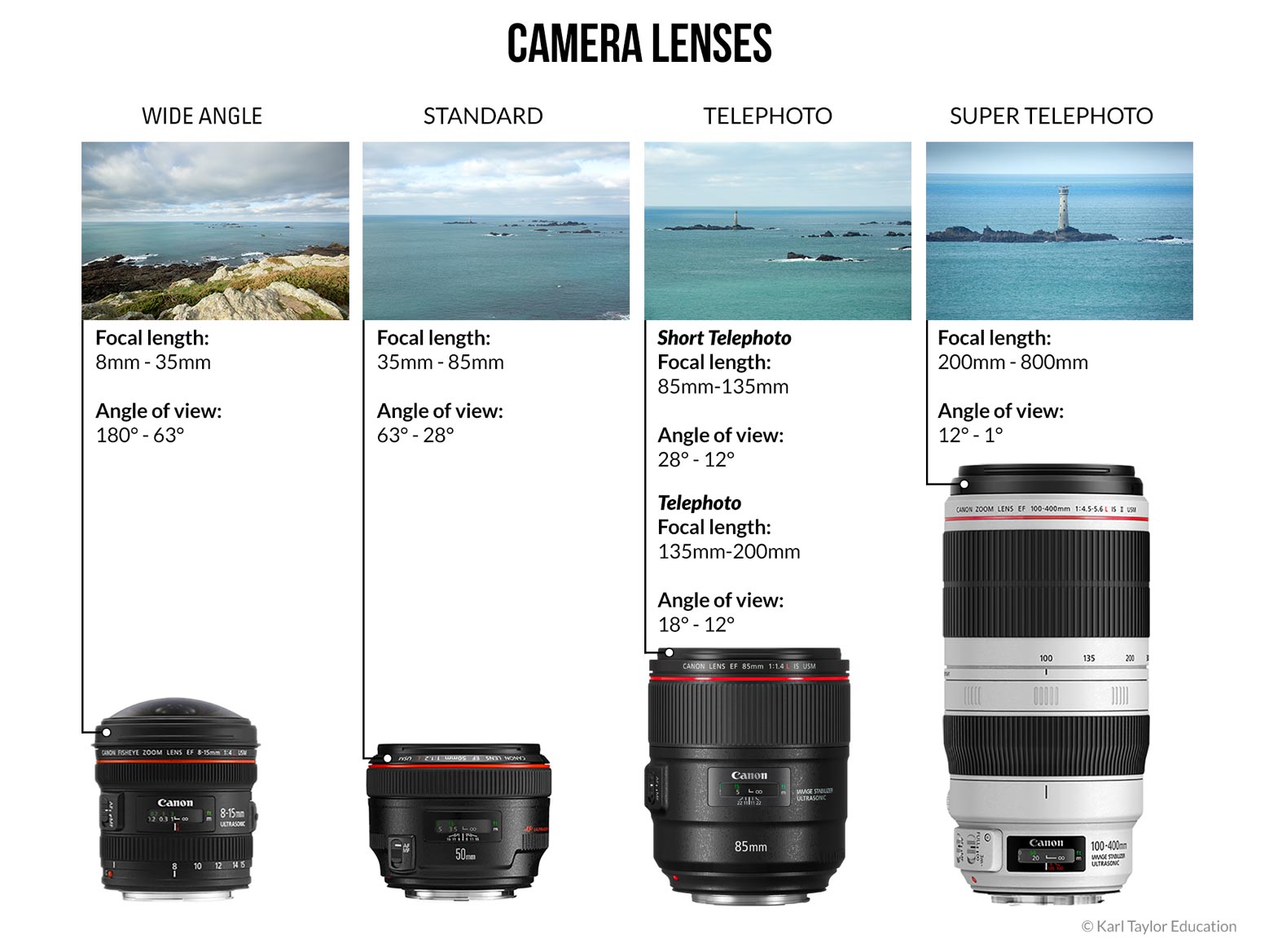
In addition to influencing the angle of view and magnification, focal length can also impact camera shake. Longer focal lengths are more susceptible to camera shake due to greater magnification — the tiniest movements become magnified and can result in blurred photos. Generally, I recommend shooting with a shutter speed equal to or greater than the focal length as this can help prevent this from happening.
Aperture
Although not specifically a type of lens, aperture is another important feature of lenses.
As you’ll already know from the previous chapters, aperture refers to the opening in the lens that controls how much light reaches the sensor. This is indicated in the format 1:2.8, for example, with the second set of numbers indicating the maximum aperture. Some lenses will feature two maximum apertures (shown as 1:4-5.6). What this means is that as you zoom, the aperture capability changes. So at the shortest focal length, you may be able to shoot at f4, but once you zoom to the longest focal length the widest aperture you’ll be able to shoot at will be f5.6. Generally lenses with wider apertures are favourable due to their increased light capturing capabilities.
There is also a category of lenses that feature a fixed aperture. Catadioptric, or mirror lenses, which used to be fairly common, usually feature a longer focal length, such as 500mm at a fixed aperture of f6.3. Most telescopes are catadioptric.
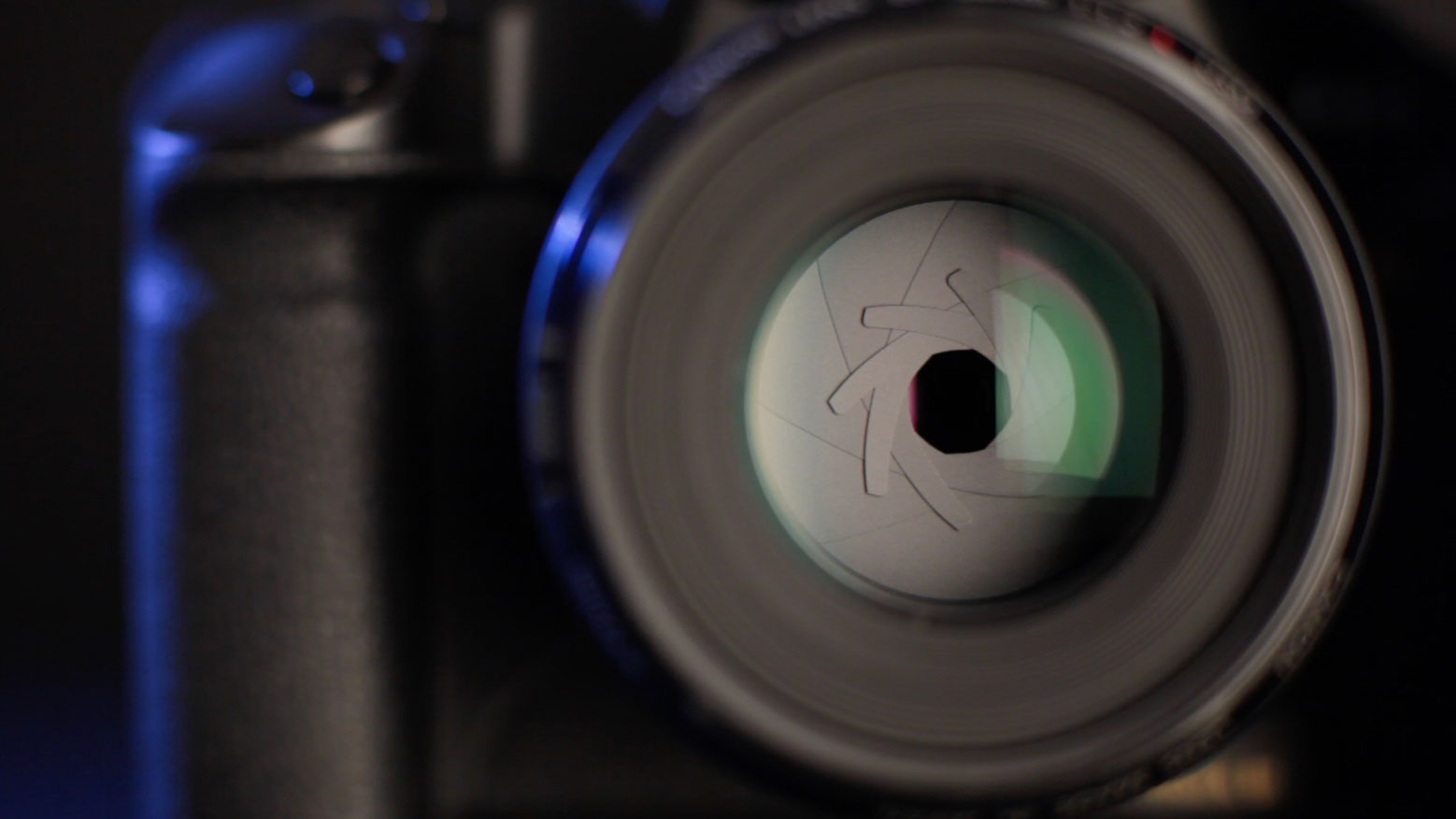
Pinhole cameras
Throughout this course, we’ve referred to six essentials of photography. However, at this point, it is important to mention that this could in fact be five. This is because images can be recorded without a lens. These cameras are known as pinhole cameras (or camera obscuras). However, recording an image without a lens is far more complex and doesn’t afford the photographer the same creative freedom as when using lenses. Essentially, without a lens, you're shooting at a very small fixed aperture. Lenses, due to the variations in magnification, allow us to shoot many different objects, which simply wouldn’t be possible with a camera obscura. For more information about this, refer to the complimentary e-book.
All content © Copyright Karl Taylor Education.
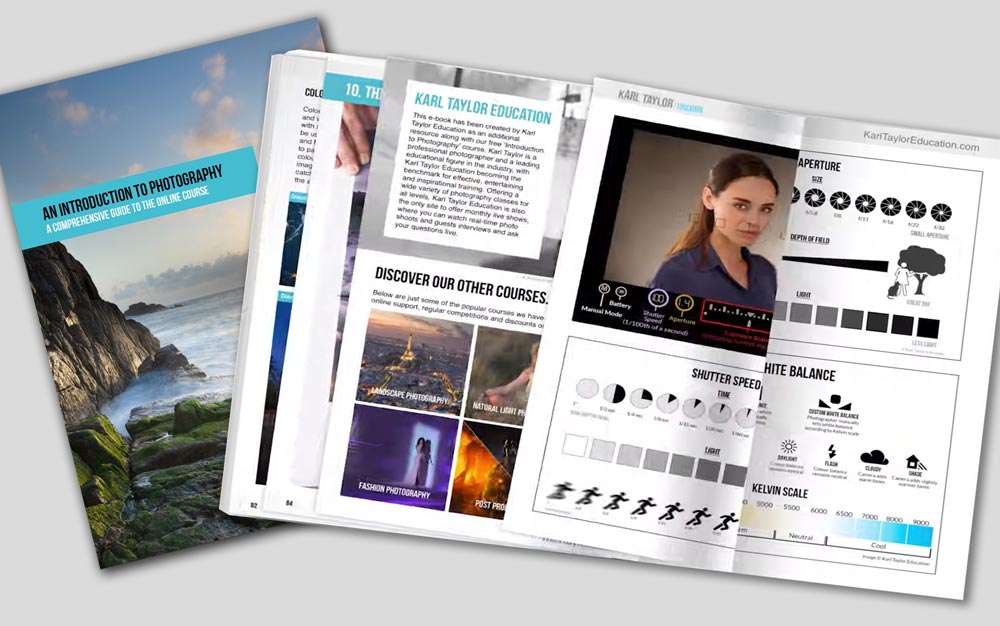
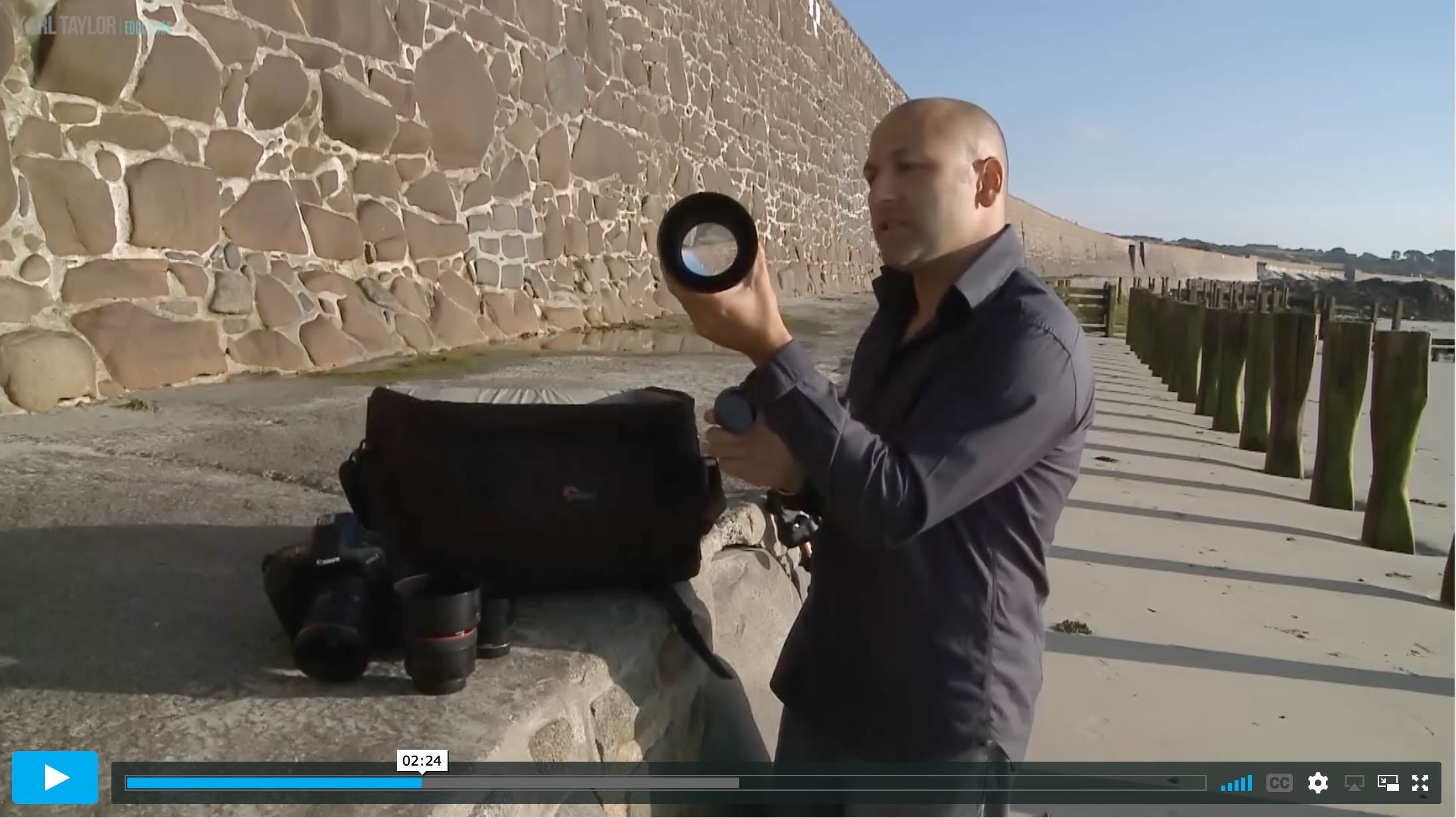

Comments
Hey Karl, would I get the same result with 85mm prime lens and 70-200mm lens (shot at 85mm focal length)? If you say yes, then why 85mm prime lens is also called Portrait lens, and is also a darling for many fashion photographers
Hi, because the 85mm prime has less elements and is optimised for that focal length only in terms of distortion, aesthetic and usually has a larger maximum aperture for shallower depth of field or lower light work when needed.
Hi Karl!
I just noticed that in your Camera Lenses graphic (above) you listed Short Telephoto as from 85-135mm and angle of view from 28°-12°. I believe you meant 28°-18° (assuming your next category, telephoto is correct from 135-200mm and 18°-12°). I only noticed because I thought the numeric info was worth remembering and was writing it down in my notes!
I joined KTE recently and have really enjoyed your recent live shows! I am really glad that I joined!
Hi Don, thanks for the info I will pass that on to our video editor to check and clarify. Glad you are enjoying the shows and content! Cheers Karl.
Hello Mr. Karl I am just starting out and have a couple of questions I use Nikon and would like to know what essential lens are needed for portrait shots and how would you capture someone in motion like doing something like painting?
Hi, for portrait work I’d recommend something around 85mm and with a maximum aperture of f1.4. (this is for a full frame 35mm format camera as you didn’t say which Nikon you have).
You’re a braver man than me Mr T.
I don’t think I’d be lining up all my expensive lens on a sea wall 🙂
Excellent content throughout your website. I’m very happy to have renewed my subscription.
Thanks Paul.
Your Introduction to Photography videos, in combination with E-books is in my opinion an excellent educational platform with I visited more than ones. The Introduction to Photography videos prepares the student for the live streaming classes that deal with the subtle differences of the photographic mysteries. I sympathies with the students that don’t experiment with the equipment they have on hand, to emulate the techniques you demonstrate in the live classes.
Thank-you, Maestro Karl Taylor
Gerardo D. Duran Jr. a.k.a. PhotosGerardoDD
“Using technology to cope with Dyslexia,
and find my Dyslexic Advantage.”
Presently I’m a widower, in my 80th decade of life and retirement active, a practicing photography enthusiast.
Thank you very much for your comments Gerardo.
Karl, I noticed you used a flash attached to your camera in this outdoor shoot? can I just use this type of camera flash for outdoor shoots instead of buying the more powerful outdoor flashes such as the AD200 AD400 or AD600. Thank you.
Hi, you can but they are not as versatile. If you do though make sure you find a way to get it off camera.
Hi Karl. What lens would you buy to take very close-up portraits of faces, that accentuate wrinkles, lines and are often seen in print journalism? I have a Nikon D3100 DSLR but am on a tight budget. I currently have a kit lens 18-55mm f5.6 and a n 18-70mm f3.5 lens, which is again an older kit lens.
Hi Tim I’d go for a portrait lens such as an 85mm focal length.
Hi, I’m thinking about buying a camera+lenses, which one would you recommend for portrait photography, Nikon D5600 + 18-105 AF-S VR or Nikon D5600 + AF-P DX 18-55 VR + AF-P DX 70-300 VR. The price of the second set doesn’t differ that much, but I would like to hear yor opinion. Thank You.
Hi Krzysztof, I’m very sorry but I can’t really offer any advice in areas like this as I don’t know these camera models well as I’ve not used them. There is only one rule I’d stick to, Full Frame sensor (medium format even better) 18mp minimum. Good quality lenses.
Karl,
You dispensed with the fill in flash for the tele photo side lit shots? Yor backlit shots were TTL flash? What focal length do you find gives the natural portrait on a tele-zoom say on a 28 – 300mm lens?I`m thing the manufacturer would try to limit extortion on 85mm length on these.
My first fill in flash shots on natural side lit shots the highlights overexposed as the speckles of light were dispersed unevenly over the face (light between tree leaves). The shadows were just about right. Again it highlighted the learning curve we go through. Needed to reposition the model or dispense with flash but I wanted some eye sparkle. 🙂
I love it how you can keep the language simple, introduce new terms and concepts clearly! Really enjoying the series
Thank you Tim, glad you are enjoying our platform!
Hi Karl,
I´m currently using an Sony a7 II with a Sony Macro 90mm (for portraits and macros) and a Rokinon 14mm wide angle for landscape, any recommendation for a new lens, so I can shoot a different style in my photography?
Thanks you
Hi Gustavo, well you have super-wide angle and portrait focal lengths covered. Really you’d be looking at 28-40mm wide-angle as a less distorted wide-angle option and maybe a telephoto in the 200+ range for the long shots or compression of the perspective.
Hey Karl, im currently using the Nikon D3200 and switching off between 35mm lens and a 70-200 zoom lens. I have been debating picking up a new camera or maybe saving up some money and buying into some nicer lenses. I feel like i have kind of hit a wall with using my D3200 but i keep hearing from every forum i read or person i talk to that its better to stick with my body and get some nicer lenses. Any thoughts? Thanks in advance.
I’d agree the lenses are more important in giving you more versatility.
Thank you Karl! That was kind of my thought too. It’s most likely a better quality glass that comes with the lens and there is this other argument people have mentioned.
By using a full frame lens on the crop body you will be effectively shooting through the center sweetspot of the lens which reduces vigneting and gives you a sharper image.
Hi Karl,
I have a question! hopefully you can help me out. I have a crop sensor camera Nikon d7100 which normally uses dx crop lenses but can also use fx full frame lenses.
i want to buy a new lens which is full frame because in the future I want to get a full frame camera body also.
will a picture be sharper, less sharp or is there no difference in using a full frame lens on a crop sensor body? Perhaps any other advantage or disadvantages?
I have tried finding the answer all over the internet but I have not managed to find a satisfying answer. A lot of people have an argument for either side of the debate.
Hi Jacques, there will be no difference in image quality at all, in fact you may find the full frame lenses sharper. The only difference is the size of the image circle which will be bigger to accommodate a full frame sensor.
Hi Karl what can I use my 50mm lens for?
Hi Ross, lots in fact it is a great all round lens. It can be used for portraits, even landscapes and with a simple extension tube it makes a good macro alternative.